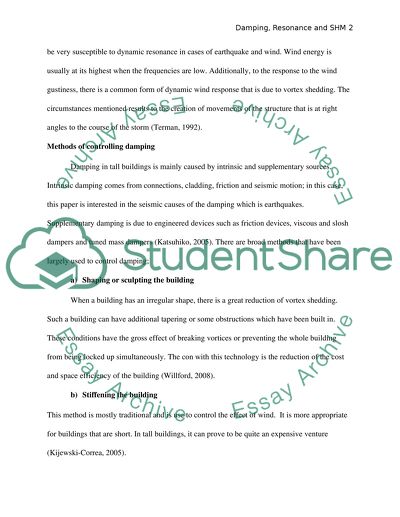Cite this document
(“Discuss the methods and technology used in damping buildings when Essay”, n.d.)
Retrieved from https://studentshare.org/physics/1595559-discuss-the-methods-and-technology-used-in-damping-buildings-when-resonance-leads-to-shm-caused-by-the-wind-and-earthquakes
Retrieved from https://studentshare.org/physics/1595559-discuss-the-methods-and-technology-used-in-damping-buildings-when-resonance-leads-to-shm-caused-by-the-wind-and-earthquakes
(Discuss the Methods and Technology Used in Damping Buildings When Essay)
https://studentshare.org/physics/1595559-discuss-the-methods-and-technology-used-in-damping-buildings-when-resonance-leads-to-shm-caused-by-the-wind-and-earthquakes.
https://studentshare.org/physics/1595559-discuss-the-methods-and-technology-used-in-damping-buildings-when-resonance-leads-to-shm-caused-by-the-wind-and-earthquakes.
“Discuss the Methods and Technology Used in Damping Buildings When Essay”, n.d. https://studentshare.org/physics/1595559-discuss-the-methods-and-technology-used-in-damping-buildings-when-resonance-leads-to-shm-caused-by-the-wind-and-earthquakes.


